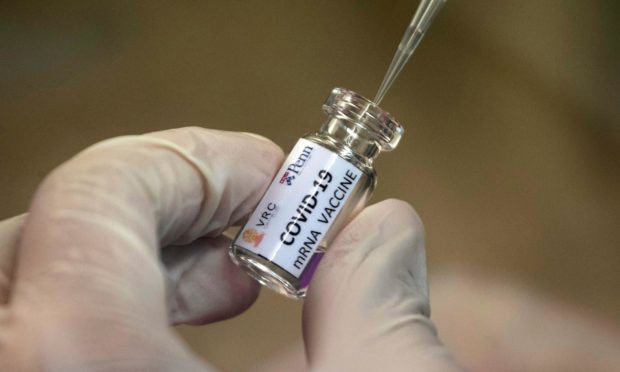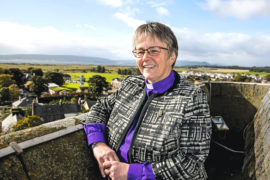Two steps forward and one back.
I suspect that is how things are going to be for the next wee while. We will make some headway when it comes to the relaxing of rules and then something will happen which will lead to them being tightened up again.
It is the nature of the beast that is Covid-19.
It is almost as if it lulls us into a false sense of security only to remind us, cruelly, that it is still here. Still lurking. And going nowhere fast.
Human nature is such that we want, and need, to interact with other human beings. We like a blether. We like to hear others’ stories and enjoy seeing the way our own lives intertwine with the lives of others.
Not being able to get close to others; not being able to shake a hand or give a hug; having to keep our distance and limit who we spend any length of time with, goes against the grain.
A large part of growing up is about making friends and expanding those friendship links. It is those friendships that help to shape us. Without them, young people are not going to have the same rich tapestry of experience to draw on.
But it is not only our children and young people who are missing out, so are our older people. At a time in life when people really and truly appreciate seeing a friendly smile, or being offered an arm to hold, or simply being able to sit among family and friends as they chat about their day, older people, both in their own homes and being cared for, are being denied that option.
People shielding know full well that their lives are being limited in order to protect them from a deadly virus, but that understanding can go out the window when it comes to too many lonely hours sitting and thinking about why the family have not been to visit.
For people in care homes, the situation can be every bit as bad – if not worse.
They may not have been able to see their family in months. Or they may have seen one of their children but not the others because that would be too many for the care home “bubble”.
On top of that, they are unable to see the faces of the staff who are looking after them.
There are, of course, some ingenious ways to try to make visits happen. There are those who have been able to have through-the-window visits and others who have been able to meet up with visitors in the garden, or at least have been able to see and hear family thanks to the use of technology.
But what about those whose rooms are upstairs? What about those who are not fit enough to get outside? What about those without access to technology? As residents or as families?
Already physically frail people are growing mentally frail through being unable to spend real time with those they love. The whole situation is made even worse still when the resident is someone who is unable to grasp the notion of a virus and who wonders why they are being “punished” and “abandoned”.
It is not just the lives of our young people that are shaped by the relationships they have, it is also the lives of our older people.
This is not intended as a criticism of the care sector – heaven knows (literally) they are doing the most amazing job in the most trying of circumstances and deserve way more than a weekly handclap (realistic pay might be a good start). This is simply to say that the issue of relationships, that are absolutely crucial to the health and the wellbeing of those in care homes, is not being addressed.
And without being overly dramatic, it is having devastating consequences.
During these last months there has been a well-documented rise in deaths of people suffering from dementia which the CEO of Scottish Care, Dr Donald MacAskill has called dying “of a broken heart”. As part of the Scottish Government’s road map, a clear way forward has already been carefully laid out to support families to reconnect. Its implementation, however, has been delayed.
Care homes and the families of residents fully understand the need to keep people safe. But they are also keen to see careful progress being made which enhances people’s mental as well as physical wellbeing.
If you are reading this and you are one of those living with not having held or seen or been able to be there for a loved one at the end, then I pray you know the love that holds you and your loved one together still, as a love that is with you always and forever.
The Very Rev Susan Brown is minister of Dornoch Cathedral and the former moderator of the General Assembly of the Church of Scotland

